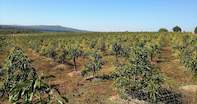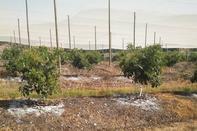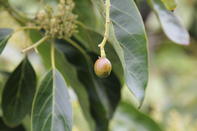Avocado cultivation is best suited to humid subtropical climates with an average daily temperature of 20℃ to 25℃. In South Africa, certain areas are suitable for highly productive avocado farming, provided the climatic conditions are suitable. These areas include the Limpopo and Mpumalanga provinces, as well as certain parts of KwaZulu-Natal, Eastern Cape, and Western Cape.

Choosing Avocado Cultivars
Choosing a suitable avocado cultivar depends mainly on the marketing strategy, market demands, and the farm’s climate and water availability. Certain cultivars can withstand moderate cold and occasional frost.
Similarly, other cultivars are more in demand for export or local markets and as such, the choice needs to be made between green-skinned and black-skinned types. Additionally, choose a cultivar that will be early or late bearing to ensure a greater supply when availability is limited.
It is important to buy the best quality plant material already hardened off from reputable nurseries.
Planting of Avocados

For new farmers, it is important to remember that avocado trees, depending on which plant material has been used, might take 7 to 10 years to become fully productive. Grafted trees sourced from a reputable nursery usually bear their first small crop in the third year after planting.
Avocados do best in soils with a 20 to 40% clay content but require well-drained soils to manage root rot, which is often caused by the fungus Phytophthora cinnamomi. A thorough soil analysis before planting will indicate possible deficiencies that can be corrected at the time of planting.
Planting distance will depend on the growth habit of the cultivars. For example, Fuerte can exhibit large and spreading growth, while Hass is a fairly upright grower.
Furthermore, orchard layout will depend on the slope and other aspects, such as whether it is north or east-facing, the soil type, thinning practices as well as access for machinery. There is a move towards ridging when preparing the soil for new plantings, but this depends on capital availability and soil type.
Management of Avocado Orchards
Farming operations in avocado production will depend on various factors such as the manager and management style, size of commercial operation and available capital. Some management actions include irrigation, pruning, and fertilisation. Some actions are covered below.
Avocado trees are sensitive to waterlogged conditions as well as to drought stress and irrigation must be managed to avoid either of these extremes. Due to South Africa’s precarious water situation, flood irrigation not advised. Micro-jet irrigation is widely used and there is a strong move towards drip irrigation due to its water efficiency.
Pruning is required in winter after harvest and can be followed with lighter pruning again in summer. Pruning methods vary from cultivar to cultivar.
When major branches are exposed to direct sunlight as a result of pruning, they should be protected from sunburn by application of PVA paint or paint specifically formulated for sunburn protection.
Fertilisation of avocados will depend on the results of soil and foliar analysis. Macronutrients required may include nitrogen, phosphorus, potassium, sulphur, calcium and magnesium.
Micronutrients required are elements such as boron, zinc, copper, sodium, iron, and manganese.
Cover crops can be used to provide biodiversity in the orchard to encourage natural predators, prevent moisture loss from the soil and to form a natural mulch.
Avocados are not wind-pollinated and require the active transfer of pollen to provide for an optimum fruit-set. The Agricultural Research Council (ARC) recommends two to four bee colonies per hectare for effective avocado pollination.
Pests and Diseases of Avocados

Root rot caused by Phytophthora cinnamomi occurs in avocado orchards worldwide. In South Africa, it is one of the main diseases affecting avocado trees. Symptoms include yellowing and falling leaves and blackening of the roots. Anthracnose of avocado is another common disease which causes rotten spots in the flesh of ripe fruit.
Another form of Phytophthora causes stem cankers of avocado trees. Cercospora spot is caused by the fungi Pseudocercospora purpurea, which causes angular-appearing spots on leaves and small brown spots on the fruit.
The heart-shaped scale is particularly a nuisance on the Hass cultivar and while the fruit fly and false codling moth damage avocado fruit, their control can be aimed to preserve the external appearance of fruit.
South African avocado orchards are relatively free of serious insect pests due to biological control by natural insect enemies. The use of insecticides in avocado orchards is mainly limited to bait sprays against fruit fly and if the use of chemicals is required. Avocado growers are encouraged to utilise Integrated Pest Management (IPM) techniques.
By Marinda Louw